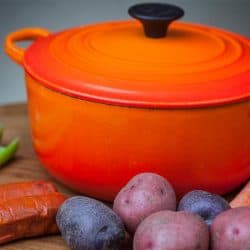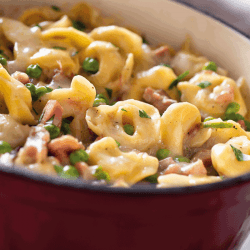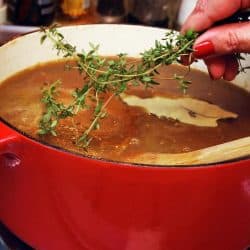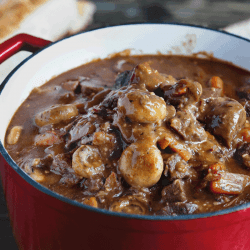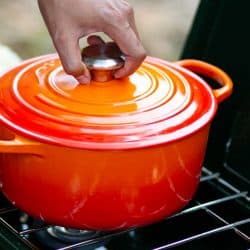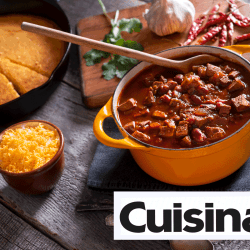Do you own a Dutch oven? If you do, you should know that they are capable of more than just making soups and stews. There is a lot of buzz around whether or not you can deep fry in these heavy-duty pots. We have done the research and have all of the answers for you.
Yes, you can fry things in a Dutch oven. You will need to use medium heat and the right kind of oil to do so. Here is how to fry food in a Dutch oven:
- Fill the dutch oven with oil.
- Heat oil to the correct temperature.
- Place food in the dutch oven.
Dutch ovens can be used for any almost cooking function. There are a few different kinds; we will cover the best kind to use for frying. Keep reading for all you'll need to know about deep frying in a Dutch oven.
![Dutch oven blue cast iron. Can You Fry In A Dutch Oven [And How To]](https://kitchenseer.com/wp-content/uploads/2021/10/Dutch-oven-blue-cast-iron.-Can-You-Fry-In-A-Dutch-Oven-And-How-To.png)
How do you deep fry in a Dutch oven?
Essentially, deep frying is frying food in an amount of oil that can cover it completely. By that definition, it is very easy to deep fry food using your Dutch oven. You will need the right amount of oil as well as the correct stove temperature for cooking.
1. Fill the dutch oven with oil
First, to fry your food, you will need oil. Dutch ovens, on average, have a five to seven-quart capacity. The size of your Dutch oven will influence how much oil you use. You will want to fill the pot at least one-third of the way with your oil.
Depending on the size of the food you are frying, you may want to add a little more oil. When adding oil, make sure that it does not surpass one-half full. That can become dangerous when you start frying.
![chef measuring oil temperature in a Dutch oven. Can You Fry In A Dutch Oven [And How To]](https://kitchenseer.com/wp-content/uploads/2021/09/chef-measuring-oil-temperature-in-a-Dutch-oven.-Can-You-Fry-In-A-Dutch-Oven-And-How-To.png)
What kind of oil should you use?
Dutch ovens are great at keeping steady even temperatures while cooking. However, not every oil will work well with deep frying. The best oils are those that have a high smoke point.
Oils like canola, grapeseed, and peanut oil are some of the best options for deep frying.
Other oils with lower smoke points can leave food with a more burnt taste if heated too high. Using oils with a smoke point lower than 400℉ will alter the flavor of your deep-fried dish.
2. Heat oil to the correct temperature
Next, you will need to heat your Dutch oven slowly. Do not put the Dutch oven over high heat to raise the temperature quickly, as this can cause scorching on the cookware.
Using medium heat from beginning to end can still achieve the correct temperature for frying.
Click here to see this cooking thermometer on Amazon.
Your oil should be between 350 and 400℉ (177 to 205℃) for deep frying. This range is essential for the quality of your food.
If it is colder, your food will cook very slowly and become saturated with oil. If the temperature is too high, you can end up burning the food before it cooks thoroughly.
How will I know when the oil is hot enough?
There are a few different ways to determine if your oil is hot enough for frying. The first and most accurate method is to use a thermometer.
Once you are within the 350 to 400-degree range, you can start frying. But what if you don't have a thermometer?
If you are using medium heat on your Dutch oven, it should take around ten minutes for the oil to heat up.
After ten minutes, you can then test the temperature of the oil. One method is to use something wooden like a spoon or chopstick. If the oil is hot enough, you will see bubbles form around the wood and start to float up.
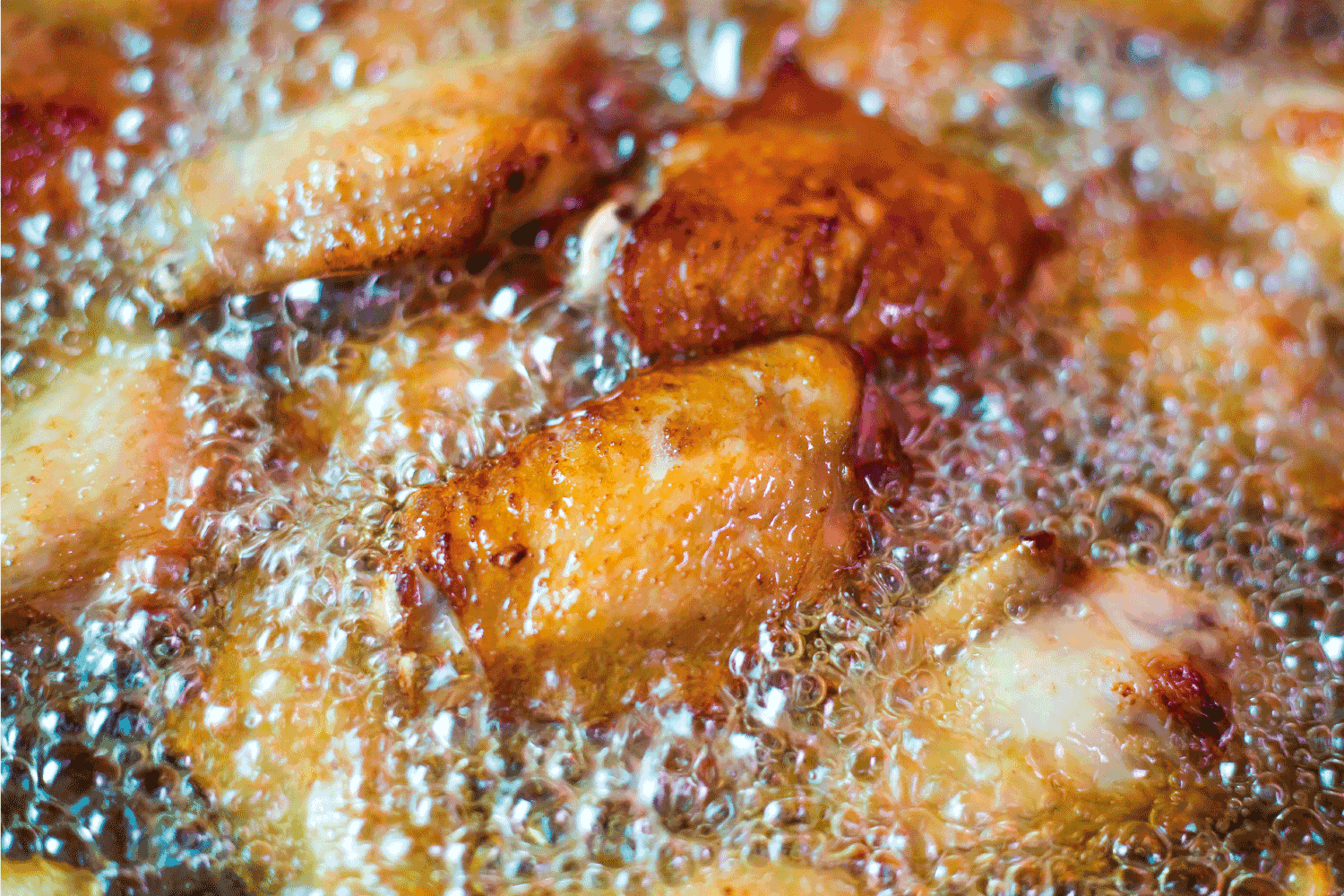
If that test produces a lot of bubbles, your oil is too hot. Alternatively, you can also test the oil with a small piece of bread.
Take a piece of bread and drop it into the oil; it should take about one minute to get golden brown. If it is done within that window, your oil is at the right temperature.
There is a chance that you will still not be at the right temperature after ten minutes. In this case, you can raise the stove temperature slightly. Once you reach the proper temperature, be sure to lower the heat back to medium for cooking,
3. Place food in the dutch oven
Lastly, you can begin frying your food. You will want to remember a few things while frying to be safe and efficient. Firstly, be sure to drop your food in steadily. Even with the high walls, oil can still splash, so be sure to drop items away from you.
For efficient cooking, do not overcrowd the Dutch oven. Making food in smaller batches is the best way to go. Everything in the oil should be in one layer with space around each item.
Check out this wire strainer on Amazon.
After the food is done frying, you can safely remove it with a metal or silicone tool. It is important to note that the oil temperature will change after cooking. If you have multiple batches to fry, this will be important.
The next batch you make will need to cook a little longer to account for the drop in temperature. To avoid changing your cook time, you can give the oil a chance to heat back up in between batches.
Deep fryer vs. Dutch oven
Since you can deep fry in a Dutch oven and a conventional deep fryer, you may wonder what the difference is between the two. There are pros and cons to each kitchen tool.
Deep fryers are easy to use, have constant temperature control, and therefore less oil absorption.
Deep fryers can be compact enough for residential kitchens or big enough for thriving businesses. No matter the size, they will require routine maintenance and can only deep fry food.
Click here to see this deep fryer on Amazon.
Their singular use is the biggest drawback. Dutch ovens, on the other hand, can do a lot more. You can saute, stew, fry, and even bake with Dutch ovens.
Click here to find this Dutch oven on Amazon.
Deep, wide Dutch ovens are the best for frying. Dutch ovens can even make larger batches than deep fryers. The best thing about Dutch ovens is that they are multi-purpose and still do a fantastic job of every possible use.
They are great for baking bread and simmering things like gravy or sauces. For more information on using Dutch ovens, check out this guide: Can I Put A Dutch Oven In The Oven?
Best Dutch oven for deep frying
By far, the best Dutch ovens for deep frying are cast iron pots. There are plain cast-iron Dutch ovens as well as enameled Dutch ovens. They will perform the same temperature wise for frying.
Click here to see this enameled Dutch oven on Amazon.
Overall, you may rather choose an enameled cast-iron Dutch oven. The enamel coating enhances the non-stick properties of cast-iron cookware. Along with that, it is durable and great at conducting heat.
Which size Dutch oven is most useful?
The most practical size of a dutch oven will depend on your usage and amount of people being served. For example, a four and a half to a five-quart Dutch oven will work just fine with a two-person household.
However, if you have a larger amount of people in the household, you will want a bigger Dutch oven.
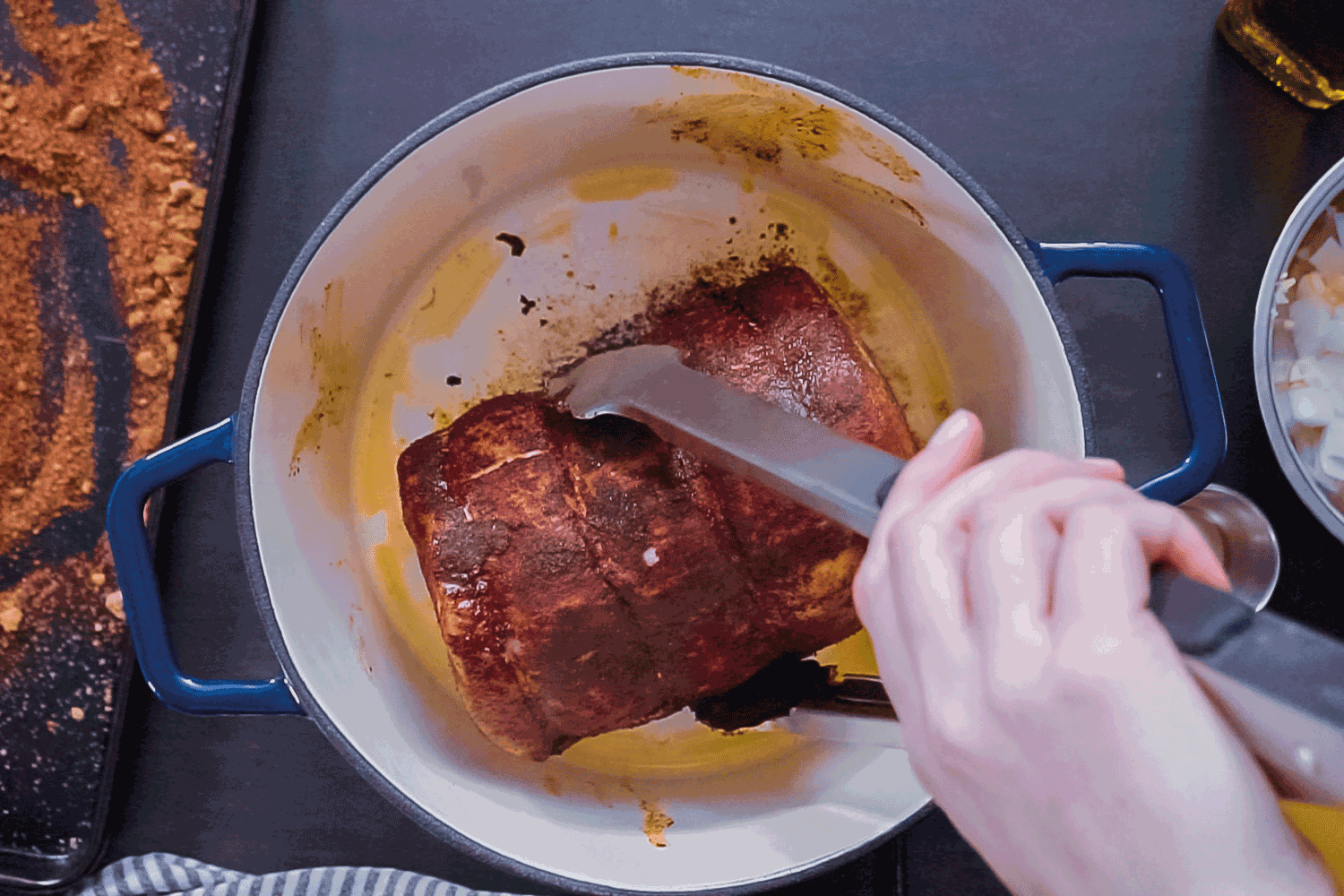
There are Dutch ovens that are up to thirteen quarts. The best size for you will be equal to one or two quarts per person served.
If you would like to have leftovers, aim closer to two quarts per person. As a general cooking pot, the ideal size for all uses is between five and seven quarts.
Is a Dutch oven just a casserole dish?
No, Dutch ovens are not the same as casserole dishes. Casserole dishes are a kind of bakeware often made of mom-metal materials like ceramic or glass. They can create the same dishes, but they cannot be used the same way.
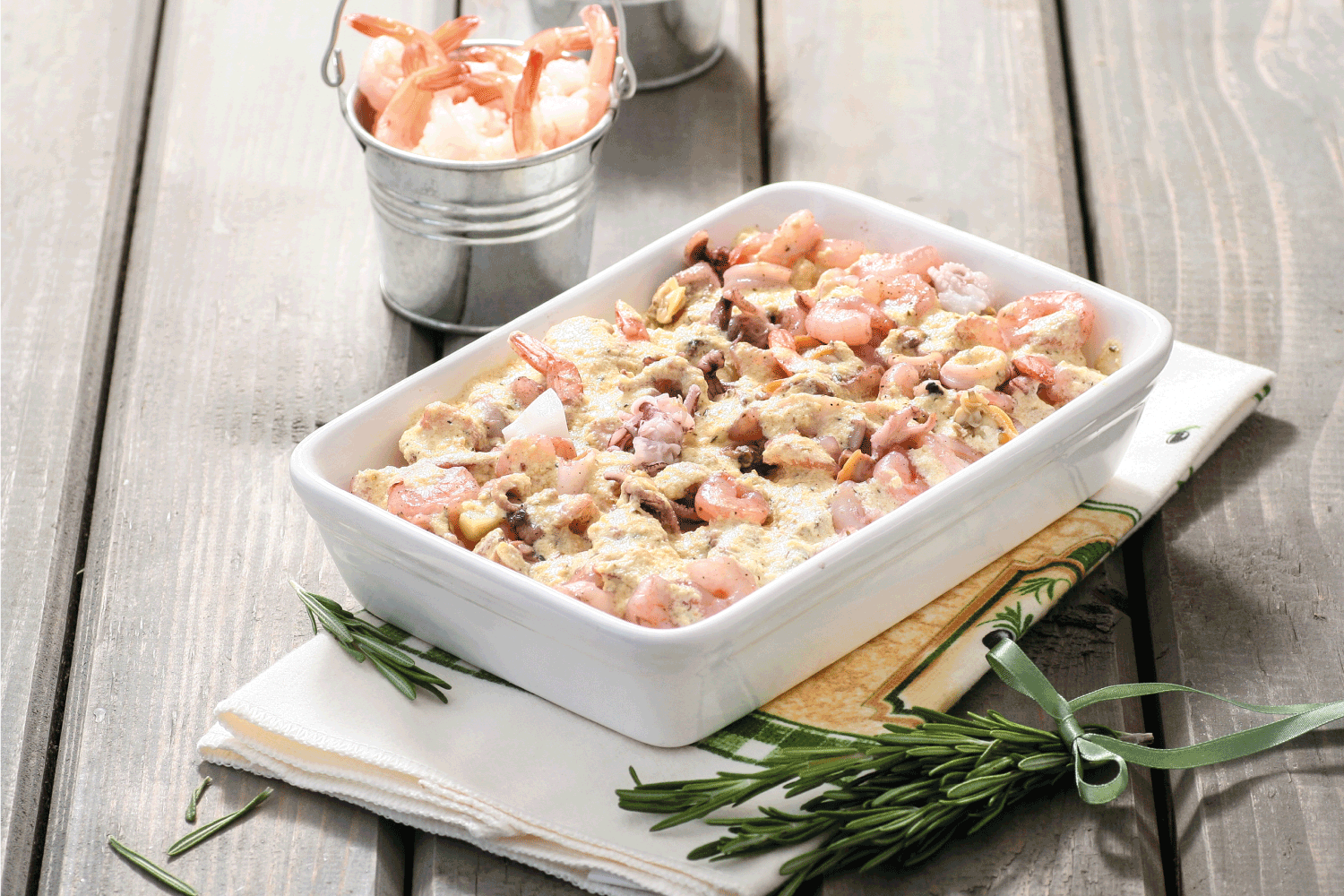
Dutch ovens are cleared for use on stovetop ranges as well as in the oven. On the other hand, Casserole dishes should never be used on a stovetop, only in an oven.
In closing
Dutch ovens can perform a lot of cooking tasks. If you are using them for deep frying, keep what you have learned in mind. First, the pot should be filled up to one-third full, no higher than one-half full.
Next, make sure you use medium heat until you get to frying temperature. Lastly, do not overcrowd the pot and allow the oil to heat back up in between batches.
For more information on Dutch ovens, consider reading this post: Can Dutch Ovens Go In The Microwave?






